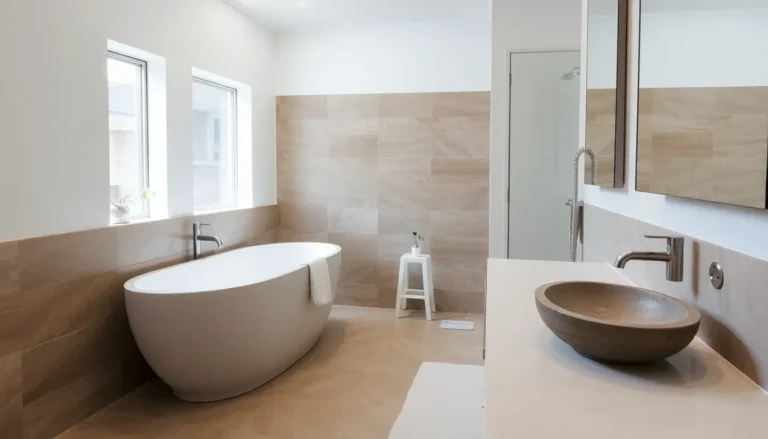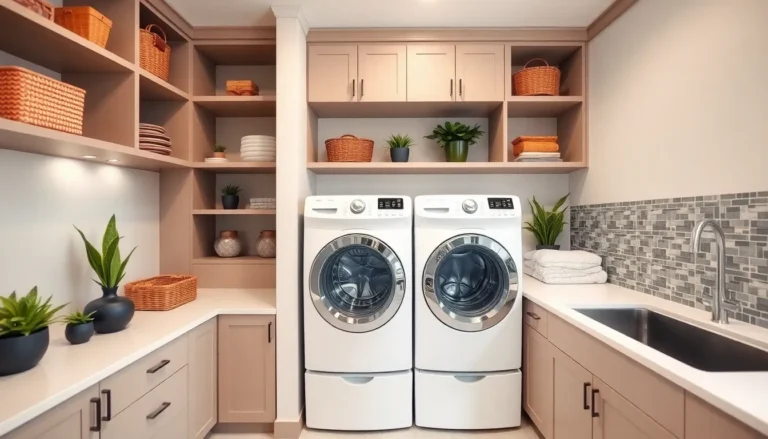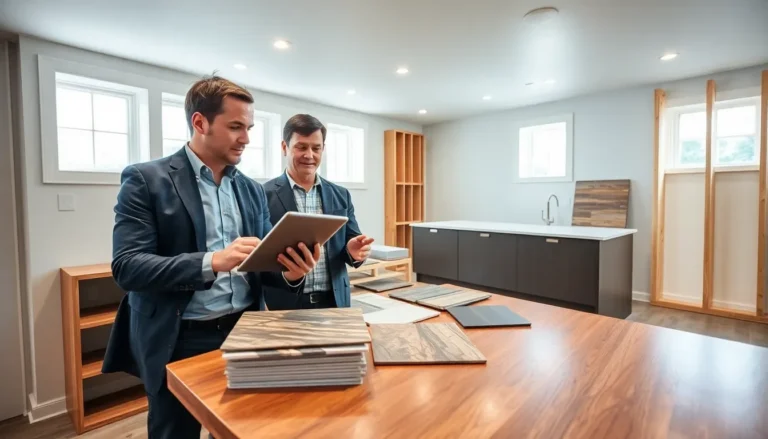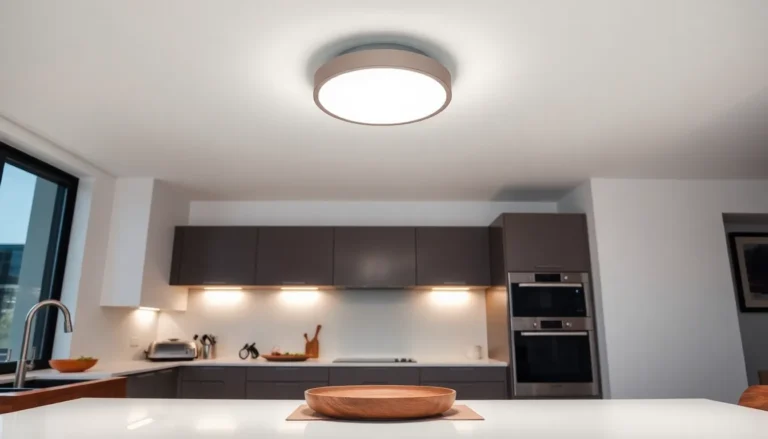Table of Contents
ToggleThinking about sprucing up your home with a fresh coat of paint or a kitchen that doesn’t scare off your dinner guests? You’re not alone. Many homeowners wonder if they can tap into their home loan to fund those much-needed renovations. After all, who wouldn’t want to turn their humble abode into a Pinterest-worthy paradise?
Understanding Home Loans
Home loans serve various purposes, enabling homeowners to purchase properties or finance significant projects. Many lenders allow part of a home loan to cover renovations, provided the improvements add value to the home.
Types of home loans available include fixed-rate mortgages, adjustable-rate mortgages, and home equity loans. Each type has specific features intended for different financial situations. Fixed-rate mortgages maintain a consistent interest rate, while adjustable-rate mortgages may fluctuate based on market conditions.
Equity plays a crucial role in determining how much can be borrowed for renovations. Homeowners can tap into their home equity through a home equity loan or line of credit, offering funds specifically for improvements. This option often presents lower interest rates due to the property’s collateral.
Using a renovation loan specifically designed for home improvements offers another alternative. These loans often include funds for repairs and renovations as part of the primary mortgage. Guidelines vary by lender, with some requiring detailed plans for the renovations being performed.
Consulting with a financial advisor or mortgage specialist proves invaluable. These experts help navigate options and find the most suitable loan products based on personal financial circumstances. Financial strategies geared toward funding renovations can significantly influence overall affordability and project success.
Research demonstrates that homeowners frequently see returns on their investments when renovations enhance property value. Prioritizing value-adding improvements fosters better long-term financial outcomes.
Types of Home Loans

Homeowners can choose from several loan types when considering renovations. Understanding each option helps optimize funding for improvements.
Conventional Loans
Conventional loans serve as popular choices for many homeowners. These loans typically require good credit scores and come with fixed or adjustable interest rates. Borrowers can often use them for renovation projects if they meet the lender’s guidelines. This approach hinges on the property’s current value and the homeowner’s financial profile. Homeowners can use a conventional loan’s cash-out refinance feature, enabling access to additional funds based on the home’s equity. By leveraging this equity, borrowers support renovation costs effectively.
FHA Loans
FHA loans are government-backed products aimed at making homeownership more accessible. They allow lower credit scores and down payments, which can benefit first-time buyers. Homeowners can obtain additional funds through an FHA 203(k) loan, specifically designed for renovations. The 203(k) program lets borrowers finance improvements alongside the home purchase or refinance. This option simplifies accessing funds for repairs and upgrades. The ability to incorporate renovation costs into the primary mortgage appeal to many looking to enhance their living spaces.
Renovation Financing Options
Homeowners can explore several financing options for renovations using their home loans. Understanding these options allows them to make more informed decisions.
Home Equity Loans
Home equity loans offer a straightforward way to finance renovations. Borrowers can access the equity in their property as a lump sum. Typically, lenders set maximum amounts based on the homeowner’s equity, ensuring responsible lending. Interest rates for home equity loans tend to be lower than those of unsecured loans. Repayment terms often range from five to 30 years, providing flexibility in managing monthly payments. Many homeowners consider this option for larger renovation projects that require substantial funding.
Renovation-Specific Loans
Renovation-specific loans cater directly to home improvement needs. FHA 203(k) loans enable homeowners to finance improvements as part of their mortgage, meaning they can borrow for both purchasing and remodeling a home simultaneously. Other options include Fannie Mae’s HomeStyle Renovation loan, which allows for funding renovations on conventional loans. Interest rates for these loans may be competitive, often reflecting borrowers’ credit ratings and overall financial health. Renovation-specific loans simplify accessing necessary funds, keeping renovation projects on track.
Can You Use Part of Your Home Loan for Renovations?
Homeowners often seek to finance renovations through their home loans. Many options exist, making it essential to understand how to utilize available funds effectively.
Eligibility Criteria
Lenders assess various factors when determining eligibility for renovation financing. Good credit scores often enhance a borrower’s chances of approval. Home equity plays a crucial role; higher equity typically means greater borrowing capacity. Debt-to-income ratios must also meet lender standards, ensuring borrowers maintain manageable payment levels. Income stability can positively influence loan decisions, as steady income demonstrates reliability for repayment. First-time buyers may find government-backed loans like FHA 203(k) loans offer flexible criteria. Ultimately, understanding these criteria enables homeowners to navigate the loan process effectively.
Important Considerations
Numerous factors come into play when planning renovations using home loans. Home improvement projects must align with lender guidelines to qualify for financing. Renovation costs should be estimated accurately to avoid underfunding projects. Budgeting for unexpected expenses is crucial, as renovations often involve unforeseen issues. Interest rates impact overall costs; lower rates generally lead to significant savings over time. It’s essential to factor in loan fees, as these can affect the total amount of borrowed funds. Consulting with mortgage specialists can provide valuable insights, ensuring homeowners make informed decisions about their renovation plans.
Pros and Cons of Using Home Loan for Renovations
Using a home loan for renovations offers several benefits. Accessing additional funds can facilitate significant improvements, potentially increasing property value. Home equity loans generally provide lower interest rates, making borrowing more affordable. Renovation loans specifically cater to upgrades, allowing for repairs and enhancements as part of the mortgage.
However, drawbacks exist. Additional debt may strain financial stability, especially if repayment periods extend. Rising interest rates can also impact overall loan costs, which might complicate budgeting. Borrowers need to factor in possible hidden fees, such as closing costs or prepayment penalties.
Potential risks should not be overlooked. Renovations might exceed budgeted estimates, leading to financial strain. Home value doesn’t always increase enough to justify investment, particularly in declining markets. Homeowners must assess their financial situation carefully, considering future needs and potential risks.
Experts recommend weighing these pros and cons. Consulting mortgage specialists can provide clarity on loan options and financial implications. Understanding specific needs is crucial for effective planning. Having a solid cost estimation process helps avoid unexpected changes.
Conclusion
Homeowners looking to enhance their spaces can effectively use part of their home loan for renovations. By understanding the various loan options available they can make informed decisions that suit their financial situation. Whether opting for a home equity loan or a specialized renovation loan homeowners can access funds that not only improve their living environment but also potentially increase property value.
It’s crucial to consider the financial implications and consult with professionals to navigate the complexities of borrowing. With careful planning and a clear understanding of costs homeowners can turn their renovation dreams into reality while managing their financial health.







